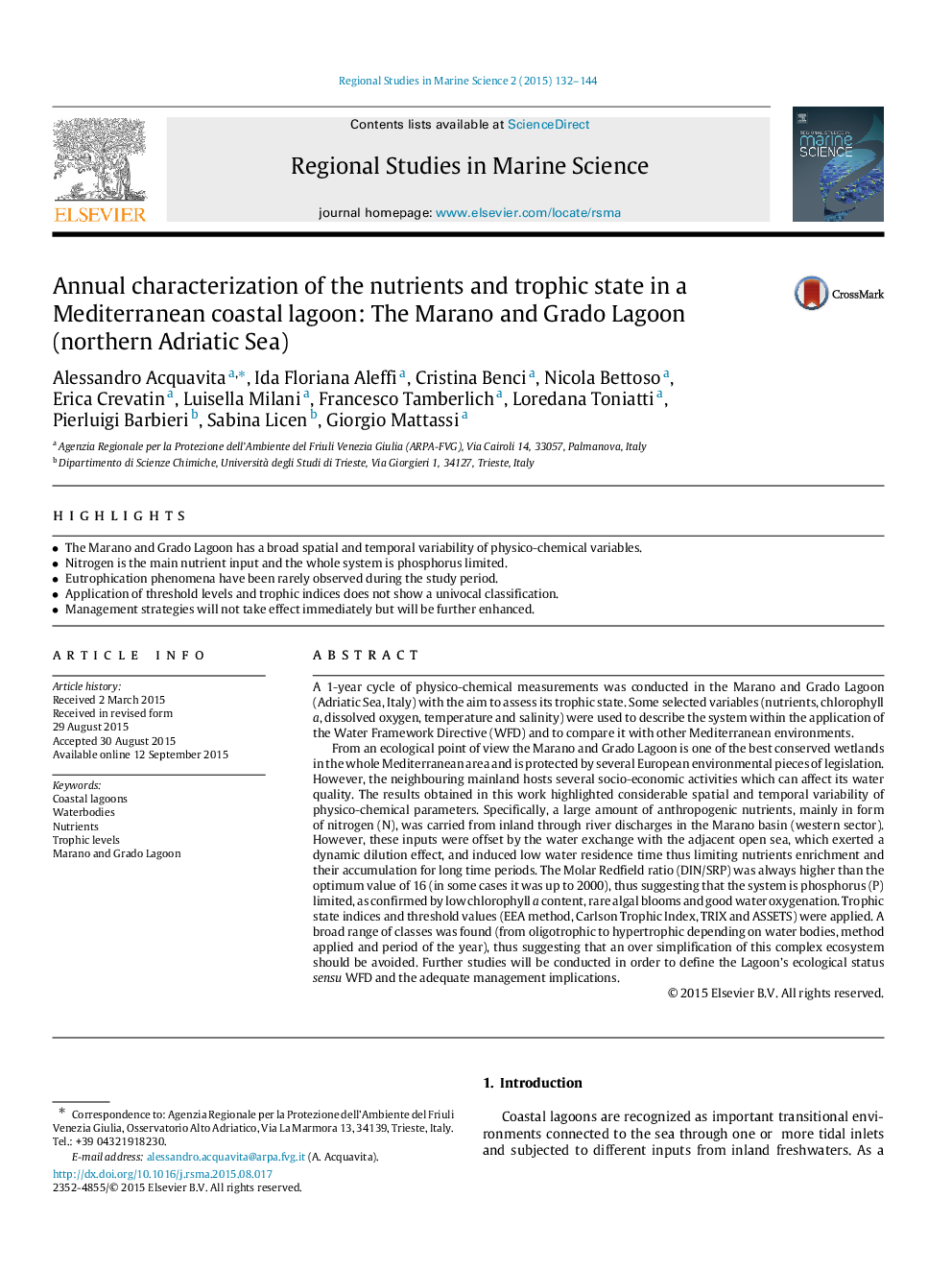| Article ID | Journal | Published Year | Pages | File Type |
|---|---|---|---|---|
| 6363195 | Regional Studies in Marine Science | 2015 | 13 Pages |
Abstract
From an ecological point of view the Marano and Grado Lagoon is one of the best conserved wetlands in the whole Mediterranean area and is protected by several European environmental pieces of legislation. However, the neighbouring mainland hosts several socio-economic activities which can affect its water quality. The results obtained in this work highlighted considerable spatial and temporal variability of physico-chemical parameters. Specifically, a large amount of anthropogenic nutrients, mainly in form of nitrogen (N), was carried from inland through river discharges in the Marano basin (western sector). However, these inputs were offset by the water exchange with the adjacent open sea, which exerted a dynamic dilution effect, and induced low water residence time thus limiting nutrients enrichment and their accumulation for long time periods. The Molar Redfield ratio (DIN/SRP) was always higher than the optimum value of 16 (in some cases it was up to 2000), thus suggesting that the system is phosphorus (P) limited, as confirmed by low chlorophyll a content, rare algal blooms and good water oxygenation. Trophic state indices and threshold values (EEA method, Carlson Trophic Index, TRIX and ASSETS) were applied. A broad range of classes was found (from oligotrophic to hypertrophic depending on water bodies, method applied and period of the year), thus suggesting that an over simplification of this complex ecosystem should be avoided. Further studies will be conducted in order to define the Lagoon's ecological status sensu WFD and the adequate management implications.
Related Topics
Physical Sciences and Engineering
Earth and Planetary Sciences
Oceanography
Authors
Alessandro Acquavita, Ida Floriana Aleffi, Cristina Benci, Nicola Bettoso, Erica Crevatin, Luisella Milani, Francesco Tamberlich, Loredana Toniatti, Pierluigi Barbieri, Sabina Licen, Giorgio Mattassi,
